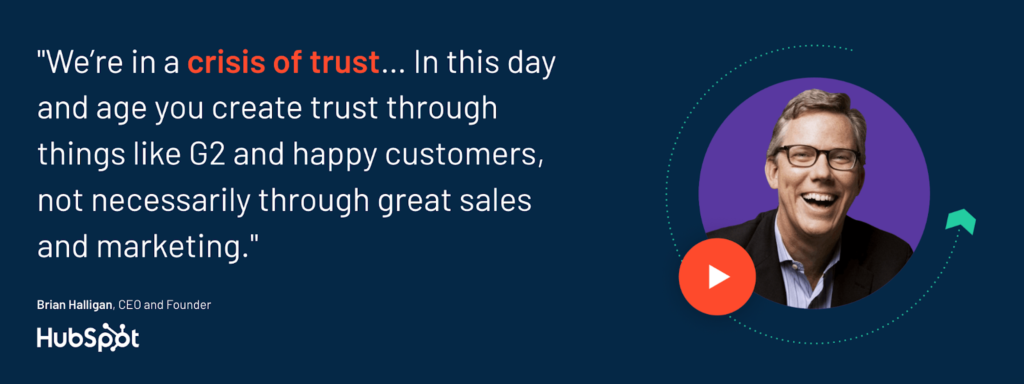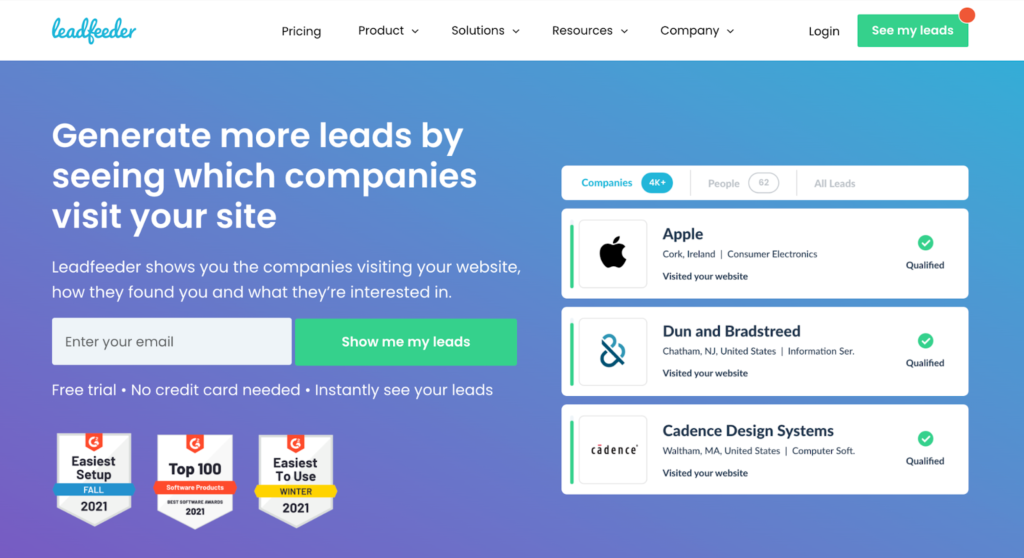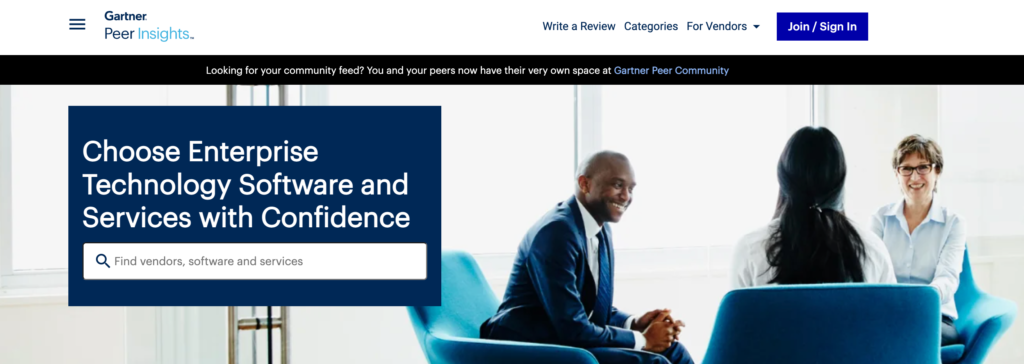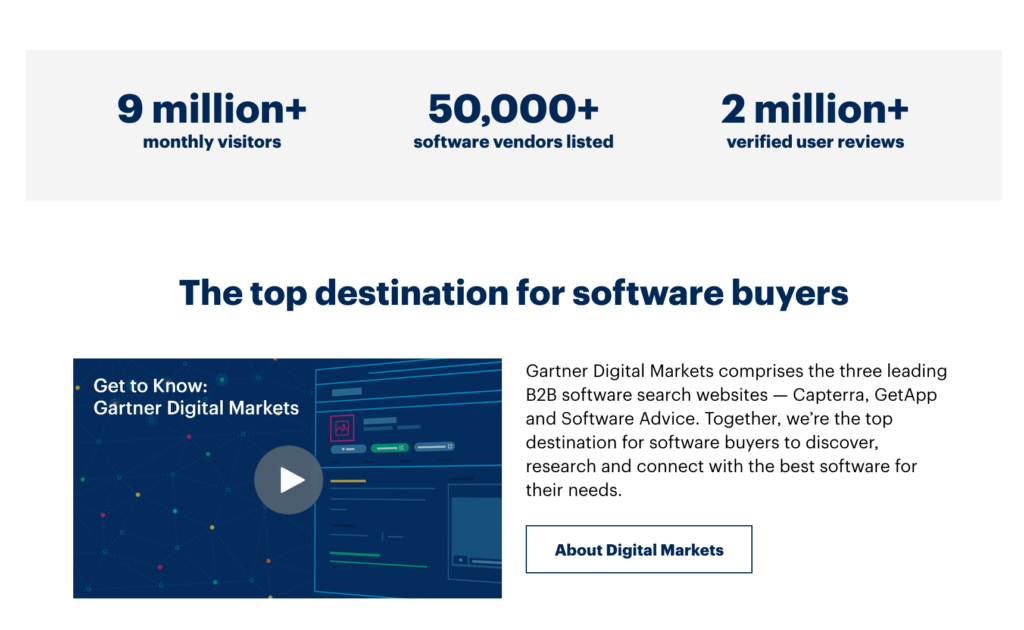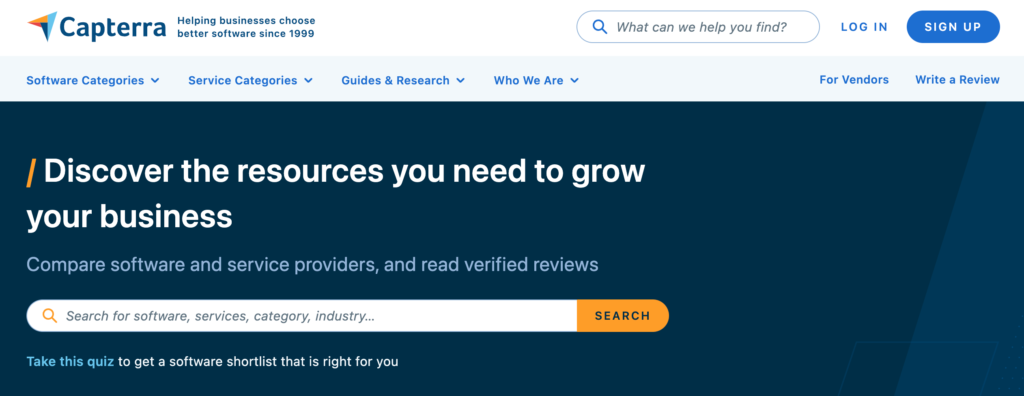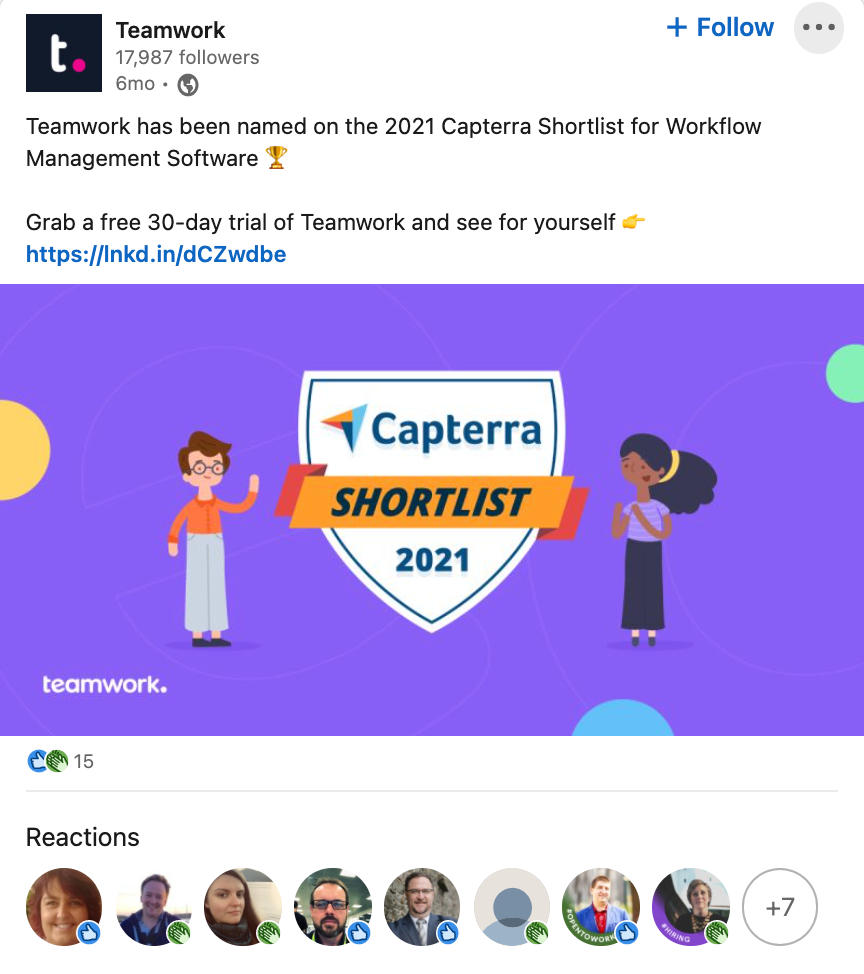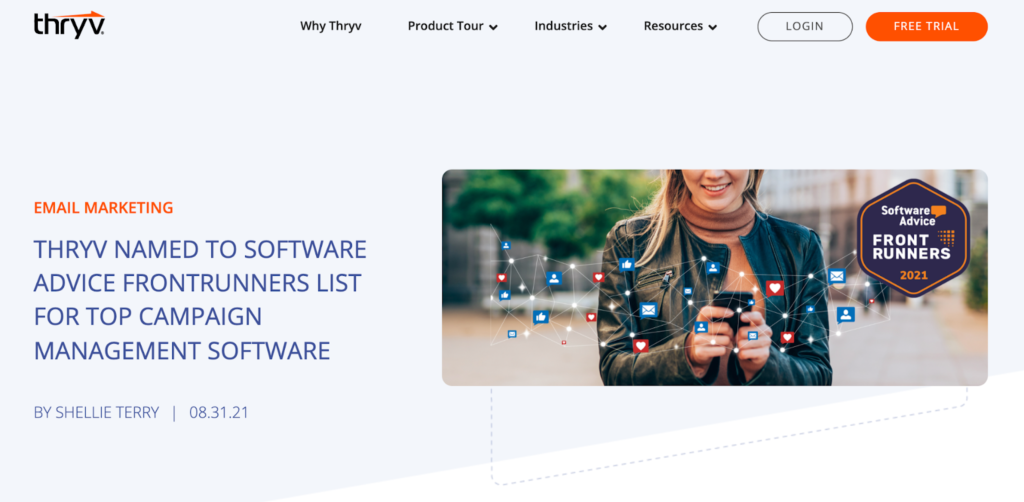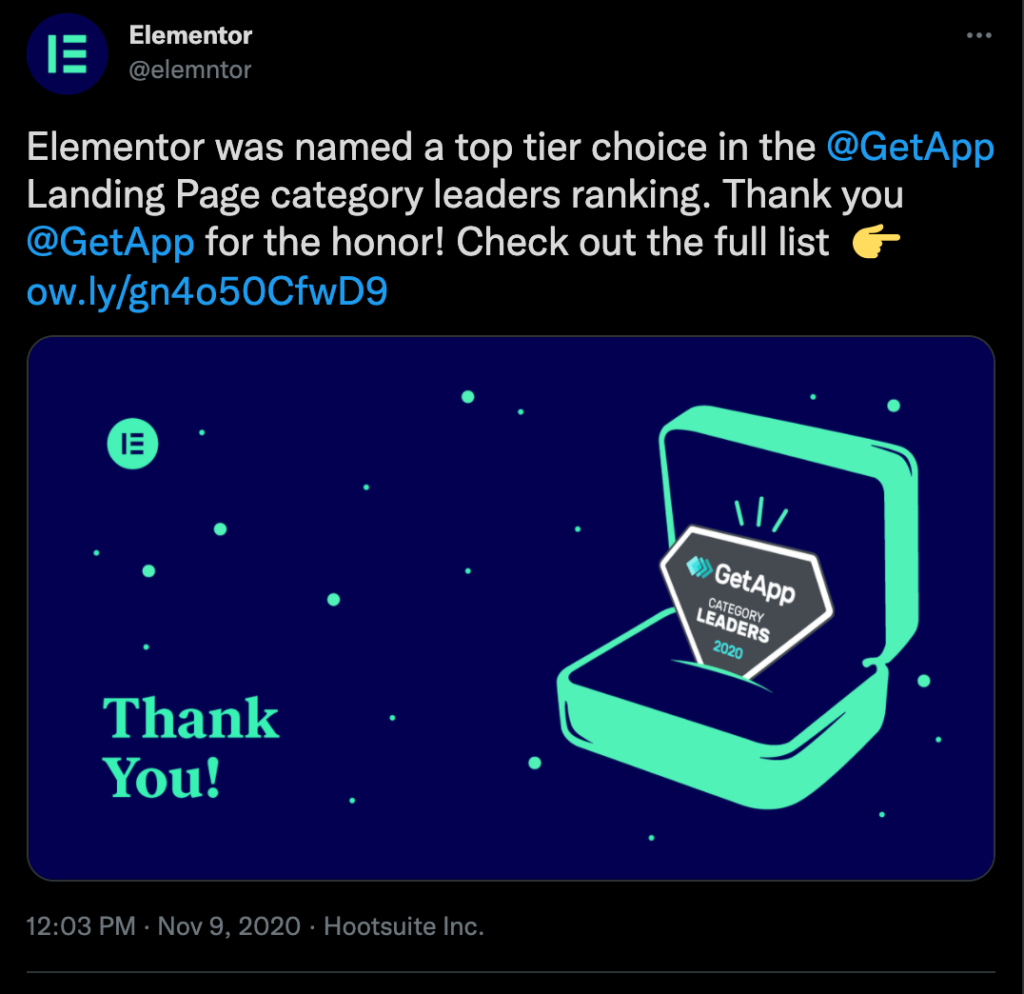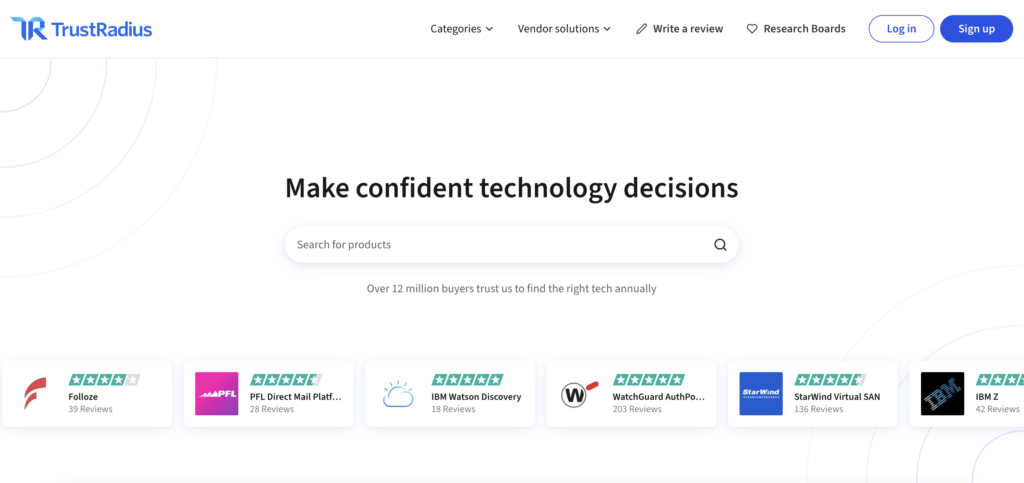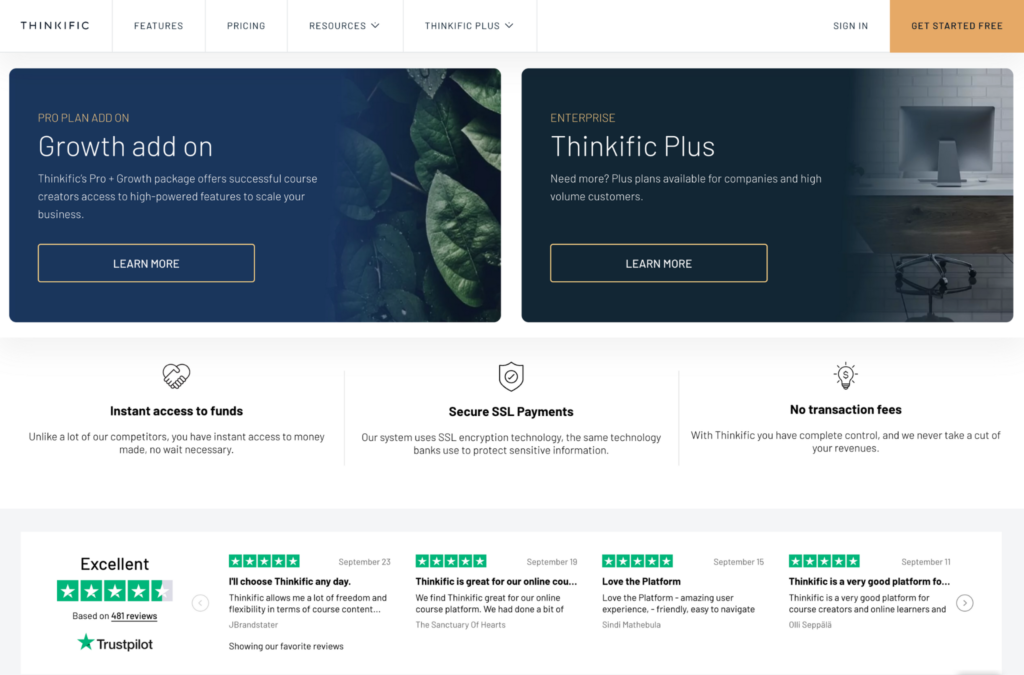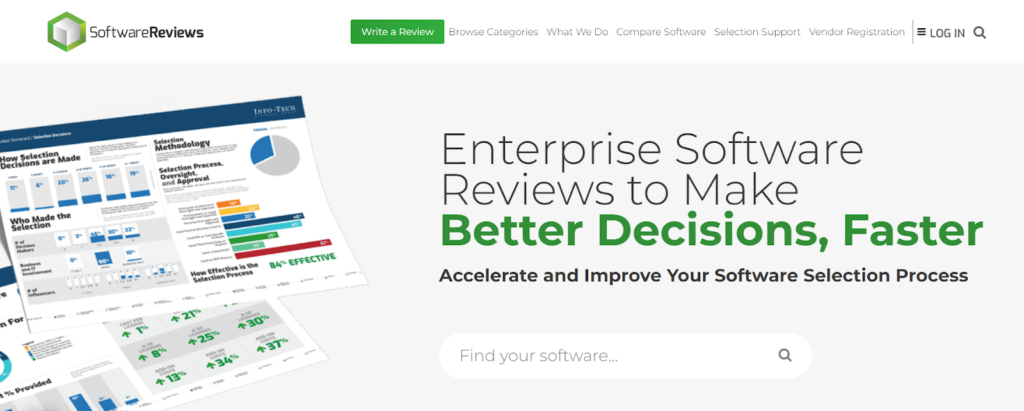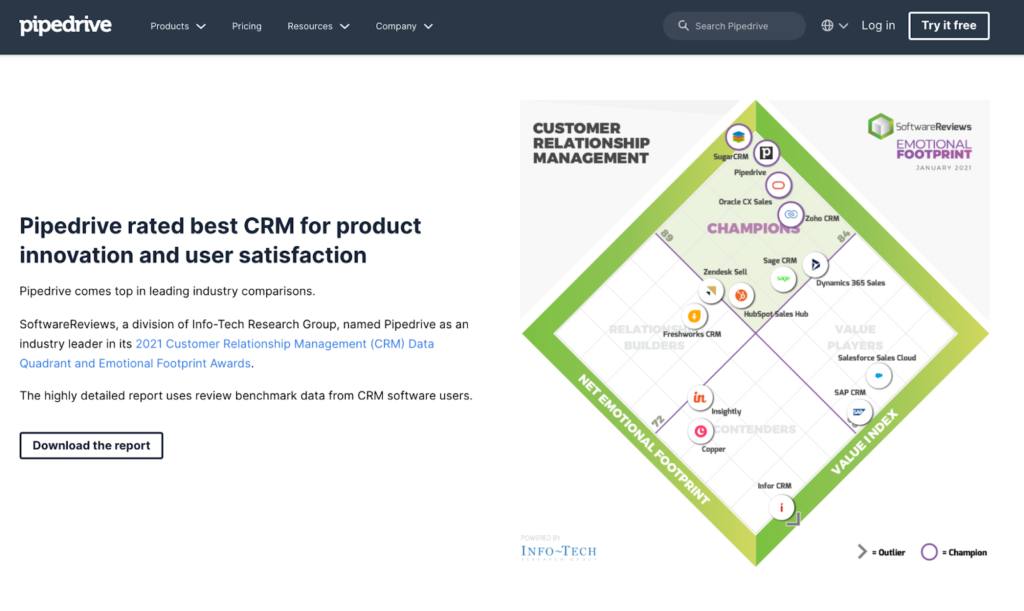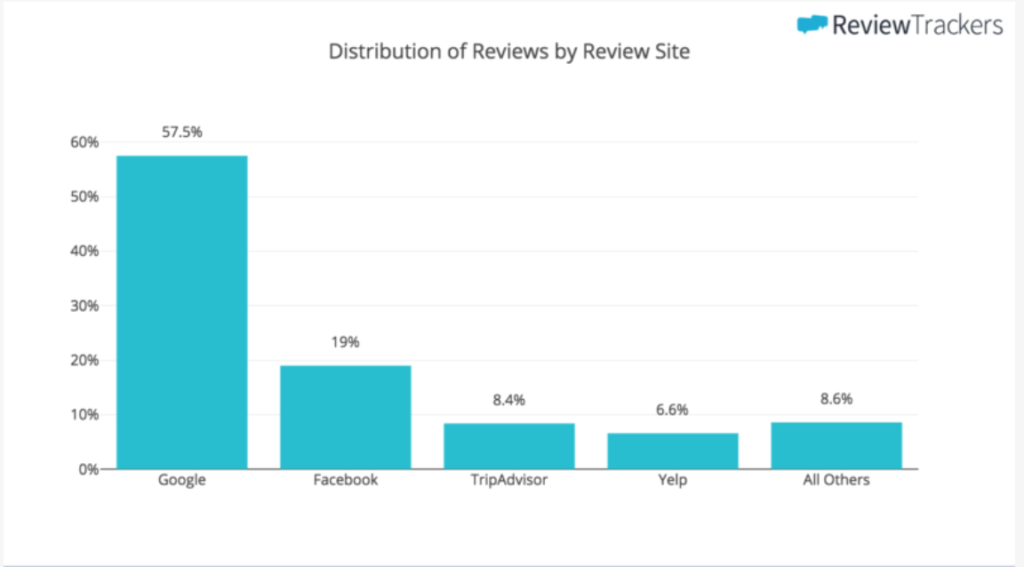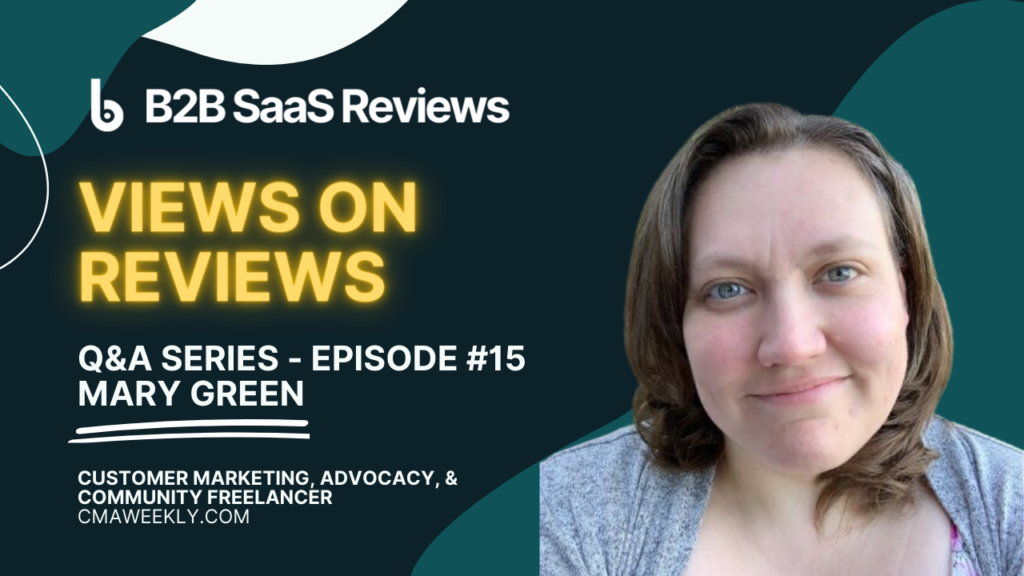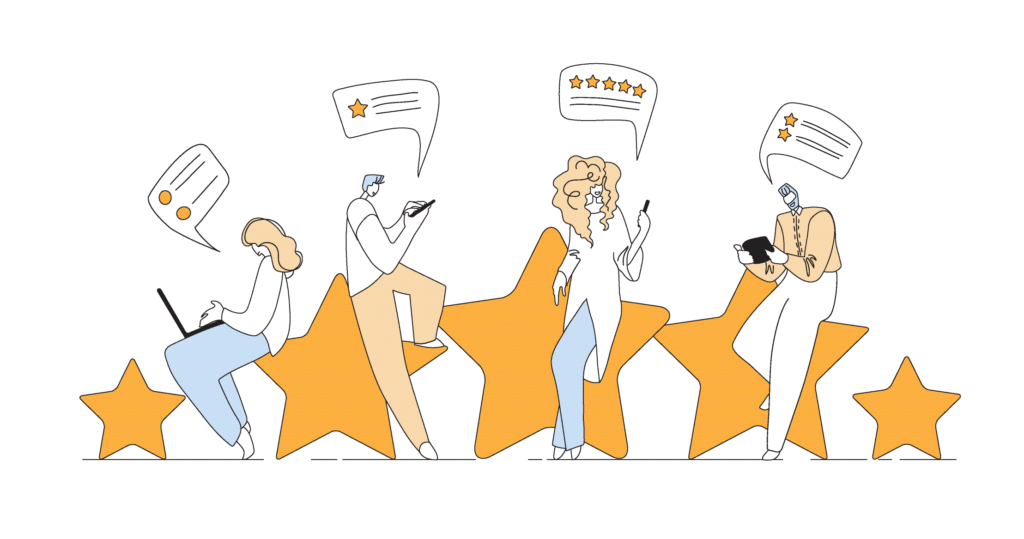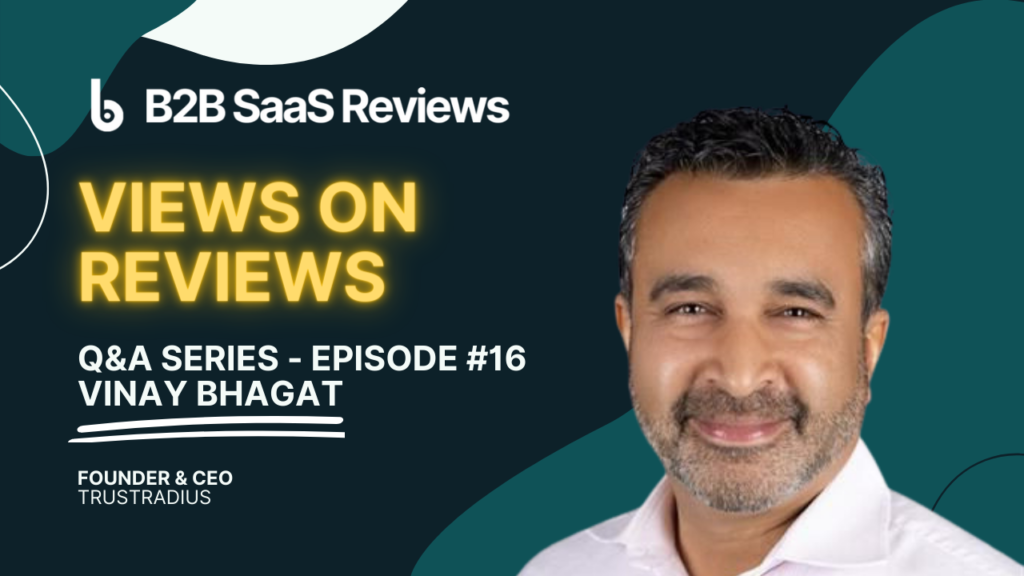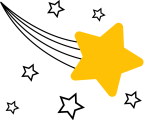As a software vendor, you need to know where your buyers go to read reviews on your software. And as a software buyer, you need to know where to turn for software reviews. This post will help give SaaS professionals a lay of the software review site land, emphasizing reviews for B2B software buyers and vendors. In it, we’ll review the top 10 software review sites in 2025 and how they fit into the broader landscape of content to help software buyers.
Table of Contents
If a review is online, but no buyer sees it, does it make social proof? One challenge for any business with an online presence is knowing where their buyers go online for reviews. For B2B software vendors, multiple business software review sites compete for your limited resources to generate user reviews on their respective sites.
The more vendors know about these software review sites, the better their user reviews will be distributed across review sites. With 89% of B2B software review site users relying on reviews often or always during the buying process and 62% finding B2B software reviews more influential than consumer reviews, vendors must have their users write reviews in the right places.
What are the Best Software Review Sites?
Based on my experience and research, in B2B software, these are the 10 best software review websites for 2025:
- G2
- Gartner Peer Insights
- Capterra
- Software Advice
- GetApp
- TrustRadius
- PeerSpot (Formerly IT Central Station)
- Trustpilot
- SoftwareReviews
- OMR Reviews
As of April 2024, here are the number of reviews by some of the top B2B software review sites.
- G2: over 2,454,000 reviews
- Gartner Digital Markets (GDM): over 2,000,000 reviews
- Gartner Peer Insights: over 595,000 reviews
- TrustRadius: over 490,000 reviews
- Salesforce AppExchange: 142,000
While Salesforce AppExchange is not a software review site, I included it for perspective on reviews in the rapidly growing software app marketplace space.
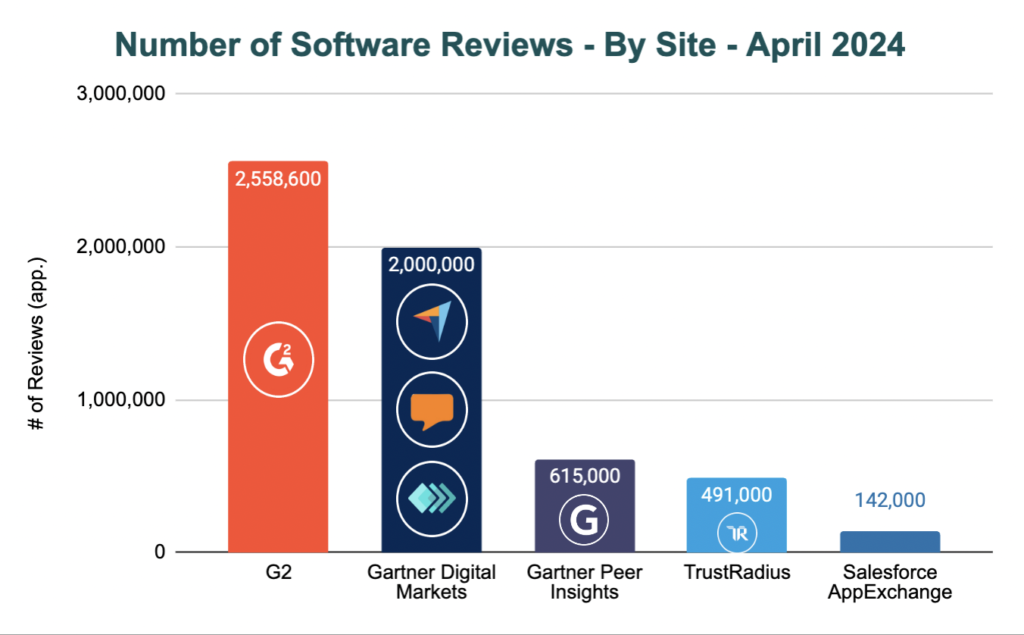
The number of reviews isn't the only thing that matters for software review sites. While the number of reviews is an imperfect metric for a review site, it can serve as a starting point to understand where software reviewers are writing reviews. Also, Google highly values user-generated content, so a high quantity of it on a site tends to be rewarded in search results. Some review sites, like TrustRadius and PeerSpot, prioritize quality over quantity. They aim for longer-form reviews: TrustRadius averages 400 words per review, and PeerSpot averages 600 words per review.
Note on review counts and software review sites Tweet
What's Changed in 2024 With Software Review Sites?
The software review landscape has shifted in 2024, making it harder for traditional review platforms to dominate search results.
Here’s a quick look at what happened software review sites in 2024:
1. Google Algorithm Changes
Google’s September 2023 “Helpful Content Update” shook the dominance of software review sites. While the exact reasons aren’t clear, the update seems to reflect Google’s experimentation with a broader mix of content in search results.
2. Gartner Peer Insights on the Rise
Gartner Peer Insights has become a standout performer, consistently ranking high in search results. While the exact reasons for its ascent are unclear, a likely explanation is its unique mix of user reviews and expert analysis, combined with Gartner’s high domain rating and long-standing authority in software buying decisions. Add to that their SEO expertise, and Gartner appears well-positioned to thrive in the current search landscape.
3. New Players Rising
Editorial sites like Security Planet and Growann are climbing the search ranks, offering niche expertise buyers value. Big names like Forbes also got a bump to even greater heights, leveraging their authority and blend of content styles. Even vendor sites, like HubSpot, are appearing more often.
4. Reddit Shifts from Fringe to Mainstream
Reddit and Quora have become regulars in the SERPs, providing buyers with raw, user-generated discussions. They often rank mid-page, showing the growing demand for community-driven insights.
5. Challenges for Review Giants
Platforms like G2 face criticism over opaque scoring methods and a decline in trust among some buyers. Google’s updates have also hit their traffic hard, forcing them to adapt.
6. Buyers Want Balance
People are looking for a mix of expert editorial reviews and crowd-sourced opinions. Editorial content offers depth and context, while user reviews bring diverse, real-world perspectives.
The New Normal
Today’s search results are more diverse. You’ll see a mix of editorial sites, review platforms, vendor content, and even Reddit threads—giving buyers more variety and helping them make better-informed decisions.
The takeaway? The days of software review sites owning the top of every SERP are over, but they’re still a critical part of the buyer’s journey. The best approach? Blend expert opinions, user insights, and your own content strategy to stay ahead.
10 Best Software Reviews Sites in 2025
Here’s a site-by-site overview of the top 10 software review sites for B2B.
G2
Founded (year): 2012
Origin story: G2 (formerly G2 Crowd) is on a mission to consumerize business software reviews. They started by asking the question, “Why is it easier to get unbiased information about a $100 hotel room than a $100,000 piece of software?”
Overview: In 2014, G2 raised a seed round of funding to become “Yelp for Software” – the 80-second explainer video created at that time still does an excellent job of explaining why review sites like G2 matter for B2B software buyers and sellers. G2 positions itself as the solution to the problem of purchasing decisions being overly reliant on analyst recommendations. Today, it is a leading site for software reviews.
Ideal for: SaaS vendors in any category.
Categories (Number Of): There are more than 1,760 categories. To review all current categories, see the G2 categories pages.
Reviews (Number Of): 2,454,600+ reviews on G2, as of January 2024, per G2’s homepage.
Products Listed (Number Of): 150,000+ products and services listed (as per G2’s Q4 2023 State of Software report.)
Visitors (Number Of): 80 million+ software buyers per year (as per G2’s Q4 2023 State of Software report.)
Default method for review sorting: Unlike the Google-inspired auction sorting of some other review sites, G2 is proud that its default sort is by the “G2 score”, which considers the best reviews based on its score algorithm. The G2 score includes recency of the review, amount of feedback provided in the review, attribution (i.e. whether the reviewer kept their name and company public), whether the reviewer is a current user of the solution (i.e. included a screenshot), and community engagement with the review.
Methodology: G2 Research Methodology covers G2’s scoring methodology, categorizations, and other topics.
Review length: Like other review sites, G2 tries to strike the right balance in review length, short enough to generate high volumes of reviews but long enough to provide more information than a testimonial. Their average review length is undisclosed.
Reviews as a Service (RaaS) option: G2 offers G2 Managed Review Campaign w/Gift Cards to customers with a paid account. Gift card budgets range from $500 to $1,000, depending on your chosen plan.
Monetization Methods: G2 monetizes its offering by selling buyer intent data to listed vendors (among a few other offerings).
About: about G2 page
FAQs: G2 FAQs, G2 Community Guidelines
Blog: G2 blog
Wayback Look: G2’s website in Nov 2012.
Extra Info: Since 2017, G2 has partnered with LinkedIn, enabling visitors to filter reviews based on their first-tier LinkedIn contacts to see what their most trusted peers say about the software.
If you’re like me and you’ve ever wondered what’s with the name (G2), apparently it’s inspired by US army staff categories, in which G-2 refers to intelligence staff (whereas G-1 is for personnel, G-3 for operations, etc.).
Vendor example: HubSpot (an All-In-One Platform For Marketing, Sales, and Customer Service) is a master of leveraging reviews. Across the web, HubSpot boosts its online reputation with reviews and many awards from its reviews.
G2 plays a central role in this for HubSpot. HubSpot’s many achievements on G2 include leading dozens of categories across HubSpot’s four product lines (Marketing Hub, Sales Hub, CMS Hub, and Service Hub) and being named #2 Best Global Seller for 2021 in the G2 Best of Software Awards. HubSpot is the lead G2 customer success story featured prominently on G2’s homepage (see image).
HubSpot uses G2 badges as social proof across the HubSpot site, as seen in this example on the HubSpot Marketing Hub page.
Given G2’s position in the market, many other software vendors leverage G2 reviews.
Here’s one more example:
- Leadfeeder (B2B website visitor tracking tool) uses G2 badges in the hero section on their homepage to support their call-to-action (“Show me my leads,” which leads to a 14-day free trial).
Gartner Peer Insights
Founded (year): 2015
Origin story: Gartner is one of the most trusted sources of information for technology buyers. Historically, Gartner has provided buyers with trusted information in analyst research and recommendations. With Gartner Peer Insights, they added user reviews.
In Gartner’s Peer Reviews launch announcement, they said, “In our research on influencers, peer reviews continues to be one of the more significant buying influences.” They also added:
“Gartner doesn’t have (and never had) an “exclusive” here (as an information source for B2B buyers). Yes, we are very influential for many decisions, but we are not alone. There are other analysts, academic experts, associations, reporters, and similar influencers that buyers look to for guidance. Customers and peers are a key part of that mix. It is all about finding trusted sources to build confidence in decisions.”
Overview: With Gartner Peer Insights, Gartner has added user reviews to the information they provide to buyers in the world’s largest companies – regardless of whether they are paid Gartner customers or not.
They aim to have reviews that go “beyond product features and capabilities to include coverage of elements of the overall customer experience, including discussion of the buying and support experience. These are key elements of buying decisions that can be as important as the product.”
Any vendor can list on Gartner Peer Insights that meets this one criterion: ”You must be an IT service provider with mid to large scale enterprise customers.” While Gartner Peer Insights doesn’t appear to define mid to large-size enterprise customers, Gartner defines midsize enterprises as “those organizations that have between $50 million and $1 billion in annual revenues and/or 100 to 1000 employees.”
Ideal for: Enterprise software buyers
Categories (Number Of): 495+ categories
Reviews (Number Of): 595,000+ reviews
Products Listed (Number Of): 20,000+ products
Visitors (Number Of): Undisclosed
Default method for review sorting: Number of ratings (the alternative sort option is by average rating).
Methodology: See the Gartner Peer Insights Voice of the Customer Methodologies.
Review length: unknown
Reviews as a Service (RaaS) option: Gartner does not offer reviews as a service. To encourage more vendors to generate user reviews on Gartner Peer Insights, Gartner is currently offering 50 free gift cards for sourcing reviews to qualified new account registrations.
Monetization Methods: Gartner has not directly monetized Peer Insights. They do not offer any paid services. Peer Insights is a free platform for vendors regardless of any separate Gartner contract.
The indirect monetization of Peer Insights comes through review data and web visitors that the reviews attract. Gartner’s Magic Quadrant is a report that software vendors license to distribute.
About: See their page for vendors
FAQs: See their Technology Provider FAQs
Resources: Search for answers to your questions about Technology Provider Tools
Blog: See the Gartner Peer Insights Technology Providers Blog
Wayback Look: Here’s the first Wayback Machine recording of the Gartner Peer Insights website in August 2015 (“Enterprise IT Software and Services Reviews by IT Professionals”).
Vendor example: Rubrik was recognized by Gartner Peer Insights Customers’ Choice award for the Enterprise Backup and Recovery Software category. Rubrik wrote a blog post on it to share the recognition. In it, they said the award “comes on the heels of being named a “Top Rated Provider” in Data Security by TrustRadius” further strengthening the achievement.
Gartner Digital Markets: Capterra, GetApp, and SoftwareAdvice
Founded (year): 2018
Origin story: Formed in 2018 (at least that’s the first recording of the Gartner Digital Markets site on Wayback Machine), Gartner Digital Markets is now a well-established trio of B2B software review sites under one umbrella, “Gartner Digital Markets.” Gartner’s “historical position as a trusted technology consultant and advisor” served as a foundation to create Gartner Digital Markets by acquiring Capterra, GetApp, and Software Advice.
Overview: Gartner Digital Markets has three software review site brands: Capterra, GetApp, and Software Advice. These software review sites have enabled Gartner to strengthen its position in the market as a trusted source of information for buyers. Gartner said, “By acquiring Capterra, GetApp and Software Advice, we now equip the millions of buyers who visit these sites every month with the unbiased information they need to make great purchasing decisions.”
Ideal for: Small and medium businesses.
Categories (Number Of): 1,100 distinct software categories
Reviews (Number Of): 2,000,000+ as of January 2024.
Products Listed (Number Of): 50,000+ as of January 2024.
Visitors (Number Of): 9M+ monthly visits: 5.1M on Capterra (56%), 2.5M on Software Advice (28%), and 1.4M GetApp (16%).
Default method for review sorting: Reviews impact organic vendor listing ranks, listed below the paid vendor listings, much like Google’s search engine results page (with paid ad results showing first and then ranked organic results).
Methodology: See the Gartner Digital Markets Research Reports page, which has the methodologies of each of their review sites.
Review length: Gartner Digital Market reviews tend to be shorter-form, testimonial-like in their length (and a review on one Gartner Digital Market review site is listed on all three of their review sites).
Reviews as a Service (RaaS) option: In an effort mutually beneficial to Gartner Digital Markets and its listed vendors, they offer gift cards to incentivize reviewers if you use their free Reviews as a Service (RaaS).
Monetization Methods: Gartner Digital Markets offers a pay-per-click model for all three sites and a pay-per-lead model in some cases (depending on the category and website (Software Advice). They are also offering buyer intent content solutions (such as competitive comparison reports and review reports).
About: About Gartner Digital Markets
FAQs: N/A
Blog: Gartner Digital Markets Insights page
Wayback Look: Here’s a look at Gartner Digital Market’s website in Nov 2018 (the earliest site recording).
Extra Info: See the Gartner Digital Markets Research Calendar for important information on when they announce their award winners – Capterra Shortlists, Software Advice FrontRunners, and GetApp Category Leaders.
Vendor example: Favro (Project Collaboration Software) Founder & CEO Patric Palm made a LinkedIn post on his company page about Favro earning badges on each of the Gartner Digital Markets review sites.
Capterra
Founded (year): 1999
Origin story: Capterra has a particularly interesting history with reviews. When it started in 1999, it was an online business directory for software (you can see what this looked like back in its early years). Then in 2007, the question arose of whether to add user reviews to the site – one founder was for adding user reviews, and the other was against it. The way the story goes, buyers on Capterra wanted user reviews, but many vendors did not. Reviews was the most popular feature request made by buyers to Capterra. But when Capterra surveyed their 1,000 paying vendors, half of them were worried about negative reviews. There was concern that negative reviews would turn away sellers from using Capterra. If Capterra were to add user reviews, they would ask reviewers to provide pros and cons for balanced reviews and prohibit anonymous reviews* to avoid fake reviews. After a debate that lasted three months, they ultimately decided to add user reviews to the site, and the rest is history (Gartner acquired Capterra for $206.2 million in 2015).
*Capterra permits anonymous reviews in a sense. Reviewers can post reviews anonymously, but for the review to be published, they must submit information on who they are to Capterra for verification to avoid fake reviews. This approach to anonymously is standard practice for B2B software review sites.
Overview: In their words: “Capterra supports business buyers who seek to help their organization grow but have limited time to become technology experts. Capterra provides visitors with a comprehensive view of the software market to quickly assess the solutions that are best suited for their personalized needs.”
Ideal for: Small-business buyers seeking software solutions in specific categories.
Categories (Number Of): 800+ categories
Reviews (Number Of): 2,000,000+* (*A review on Gartner Digital Markets (GDM) site applies across all three of their sites: Capterra, Software Advice, and GetApp. Therefore, the review count for each site is the same for each site.)
Products Listed (Number Of): 50,000+
Visitors (Number Of): 5.1M on Capterra (56% of Gartner Digital Markets visitors)
Default method for review sorting: The default listing is Sponsored Vendors. Vendors bid for listing placement on Capterra category pages. This option sorts the directory by those bids, highest to lowest. Vendors who bid for placement have an orange “Visit Website” button on their listing. Below the lowest bidder is the non-bidding vendors. You can tell which listings are non-bidding by the call to action button: the blue buttons lead a visitor onsite to the vendor’s Capterra profile page. After all sponsored vendors, non-bidding vendors are ranked from most reviews to least reviews. The alternative ranking option is Highest Rated.
On product pages, Reviews are by default sorted by Most Helpful to software buyers, driven by their proprietary algorithm.
Methodology: See the methodology for the Capterra Shortlist awards.
Review length: Capterra reviews tend to be shorter-form, testimonial-like in length (and a review on one Gartner Digital Market review site is listed on all three of their review sites).
Reviews as a Service (RaaS) option: In an effort mutually beneficial to Gartner Digital Markets and its listed vendors, they offer gift cards to incentivize reviewers if you use their free Reviews as a Service (RaaS).
Monetization Methods: Capterra’s core monetization model is pay-per-click, like Google search ads. Vendors bid in an auction to rank higher on category pages to get more clicks to their landing page (as well as more impressions as a “top” vendor listed higher on the page). They have recently added buyer intent as another monetization lever (and paid content options for reports with data and information from reviews on their sites).
About: About Capterra
FAQs: Capterra FAQs
Blog: Capterra blog
Wayback Look: Here’s one of the first Wayback Machine recordings of Capterra’s website when it added user reviews in Nov 2011 (Marketing Automation Software category example).
Extra Info: Capterra is starting to add grids to some of its categories (same as G2: rating score (satisfaction score) on the X-axis and popularity score (market presence) on the Y-axis. They’re calling it the Capterra Shortlist (renaming their Capterra Top 20 and mapping vendors on the familiar 2×2 grid). Here’s an example of a Capterra Shortlist for Project Management Software.
Vendor example: Teamwork (Project Collaboration Software) made the 2021 Capterra Shortlist for Workflow Management Software and shared the news on LinkedIn. Instead of a link to a blog post or press release that speaks to the achievement, they opted for a call-to-action to start a free 30-day trial.
Software Advice
Founded (year): 2005
Origin story: Software Advice Founder Don Fornes shared the origin story on the Mixergy podcast. Before Software Advice, Don worked with some investors to find software companies to acquire and build up. After doing this for a year, he came to the realize:
“Gee. I’ve done all this research on niche software markets, and there is no great resource out there on the web where you can research these markets and these products. Someone needs to build this. There’s Gartner and Forrester for the Fortune 500 or the Fortune 1000, but no one is serving the small, midsize business market. I thought it wouldn’t take a lot of capital; it’s something I could bootstrap… So I got working on this idea (Software Advice).”
In 2006, Software Advice launched its site, focusing on software for the construction industry. Then in 2009, driven by a stimulus bill to subsidize the adoption of electronic medical records, they expanded to software for the medical industry. Medical quickly became 60% of their business, which helped grow the business and fund their growth to diversify into other software markets. In 2014, Gartner (Digital Markets) acquired Software Advice.
Overview: Software Advice is for busy buyers who prefer interaction with an advisor for one-on-one, tailored support. It differs from other review sites in that the experience isn’t entirely self-guided by the visitor but instead offers free phone consultations with software advisors to help guide buyers.
Ideal for: Software buyers at small and medium-sized businesses who would like someone to expedite the exploratory part of the buying process by narrowing the software options based on the buyer’s needs.
Categories (Number Of): Today, Software Advice has over 900 software categories, covering a wide array of industry-specific software and beyond (such as Marketing Software and 19 sub-categories, all of which are not industry-specific.)
Reviews (Number Of): 2,000,000+* (*A review on Gartner Digital Markets (GDM) site applies across all three of their sites: Capterra, Software Advice, and GetApp. Therefore, the review count for each site is the same.
Products Listed (Number Of): N/A; There are 50,000+ software vendors listed across all three Gartner Digital Markets sites.
Visitors (Number Of): 2.5M on Software Advice (28%)
Default method for review sorting: Sponsored (by highest bidder), followed by non-sponsored listings (by number of reviews). There are four sort options in more popular categories. One to note is “# recommendations.” Software Advice provides phone consultations to buyers and makes vendor recommendations (and Software Advice passes them on to vendors as leads).
Methodology: See the Software Advice Front Runners Methodology.
Review length: Capterra reviews tend to be shorter-form, testimonial-like in their length (and a review on one Gartner Digital Market review site is listed on all three of their review sites).
Reviews as a Service (RaaS) option: In an effort mutually beneficial to Gartner Digital Markets and its listed vendors, they offer gift cards to incentivize reviewers if you use their free Reviews as a Service (RaaS).
Monetization Methods: Their primary method is pay-per-lead. They also offer pay-per-click.
About: See the about Software Advice page.
FAQs: See the Software Advice FAQs.
Blog: See the Software Advice resources and articles.
Wayback Look: Here’s one of the first Wayback Machine recordings of Software Advice’s website in October 2007 (illustrating their initial focus on industry software like Construction Software, Medical Software, and Retail Software).
Extra Info: In 2012, I got my start in software as a Sales Development Representative at Eloqua, a leading Marketing Automation Platform. In that role, I received Software Advice leads first-hand and I found it to be a top lead source. Software Advice leads came pre-qualified and recommended by a third-party advisor, with a buyer process initiated by the buyer. Software Advice covered the Marketing Automation space well; buyers came well-informed to Eloqua from Software Advice.
Vendor example: Thryv (CRM and Marketing Automation Software) was named to Software Advice’s FrontRunners list for Top Campaign Management Software and used the opportunity to write a blog post on it.
GetApp
Before GetApp, Christophe Primault, founder of GetApp, was running a SaaS startup in a niche space and was struggling to find a way to reach his audience. As he told it on the Mixergy podcast, “So, I already thought to myself there’s a problem. I’ve got a niche product, but I know people need it and will probably want to buy it, but they can’t find me, and I can’t find them. I need to find a newer way to match providers of cloud-based solutions with companies out there, specifically small and medium businesses. It’s basically how the idea started.”
Overview: GetApp supports software-savvy buyers who understand the importance of technology to grow their business.
One way it differs from other software review sites is that GetApp offers recommendations based on your profile and previous interactions on the site. To get your GetApp recommendations, join their community, tell them your business and industry’s size, select the apps you use today, and see what their recommendation engine suggests. These recommendations work particularly well for small-business owners who want to understand the software they should use for their business.
Ideal for: For tech-savvy buyers interested in evaluating key product features for small and medium-sized businesses.
Categories (Number Of): 850+ categories
Reviews (Number Of): 2,000,000+* (*A review on Gartner Digital Markets (GDM) site applies across all three of their sites: Capterra, Software Advice, and GetApp. Therefore, the review count for each site is the same.
Products Listed (Number Of): 30,000+ software profiles
Visitors (Number Of): 1.8M GetApp (16% of Gartner Digital Markets visitors).
Default method for review sorting: Sponsored (like on Capterra) by the highest bidder. Sponsored results show a ‘Visit Website’ button. Unpaid results display a ‘Learn More’ button.
One difference from Capterra and other sites is that GetApp has an additional “most relevant” sort option, personalized based on your previous interactions on the site.
Methodology: See the GetApp Category Leaders methodology.
Review length: Capterra reviews tend to be shorter-form, testimonial-like (and a review on one Gartner Digital Market review site is listed on all three of their review sites).
Reviews as a Service (RaaS) option: In an effort mutually beneficial to Gartner Digital Markets and its listed vendors, they offer gift cards to incentivize reviewers if you use their free Reviews as a Service (RaaS).
Monetization Methods: Same as Capterra’s: the core monetization model is pay-per-click, like in Google search ads: vendors bid in an auction to rank higher on category pages so that they will get more clicks to their landing page (as well as more impressions as a “top” vendor that is listed higher on the page).
About: See the about GetApp page
FAQs: See the GetApp FAQs
Blog: See the GetApp blog
Wayback Look: Here’s the first Wayback Machine recording of GetApp’s website with user reviews in Mar 2010 (Marketing Automation Software category example).
Vendor example: Elementor (Website Builder Software) was named a GetApp Category Leader in Landing Page software and tweeted about it with a delightful design that plays with the diamond-shaped award—more on Elementor Pro here.
TrustRadius
Founded (year): 2012
Origin story: Vinay Bhagat, Founder of TrustRadius, had two personal experiences responsible for creating TrustRadius. The first experience was a B2C purchase that unsurprisingly highlighted the value of reviews.
“It was December 2011. I was shopping for a gift for my wife, a coffee machine, so I went to Williams-Sonoma. The salesperson recommended one of the in-stock products, but I didn’t fully trust their advice. I talked to a friend who recommended a brand called Jura. I searched online for reviews and stumbled across a site called CoffeeGeek which had amazingly thorough reviews. They affirmed his recommendation and gave me the confidence to buy.”
The second experience was with his B2B software purchases. At the time (in 2011), as a founder at a 450-person SaaS company, he bought “a lot” of software, always found it challenging, and sometimes made the wrong choice and had to switch.
Then Vinay asked himself, why isn’t there a CoffeeGeek (review site) for B2B software? And so, TrustRadius was born.
Overview: TrustRadius focuses on creating in-depth user reviews for software buyers, as they “optimize for content quality and data integrity.” It takes an SEO-driven, 100% organic approach to drive highly relevant traffic to its site.
Ideal for: Buyers at mid-sized and larger companies making more significant purchases and want more in-depth content.
Categories (Number Of): 550+
Reviews (Number Of): 490,000+
Products Listed (Number Of): Unknown
Visitors (Number Of): 1M+ Monthly Visitors (54% companies above 1,000 employees)
Default method for review sorting: Sorted by Most Reviews
Methodology: See the TrustRadius methodology
Review length: More than 400 words per review.
Reviews as a Service (RaaS) option: TrustRadius offers all vendors a managed or DIY-driven review generation process. They provide a free DIY review Growth Toolkit and a custom product landing page to drive reviews. They also run TrustRadius managed review generation campaigns for software vendors and provide TrustRadius-managed incentives.
Monetization Methods: TrustRadius has three packages: Customer Voice, Ultimate, and Ultimate+. They cover buyer intent data, content licensing, and customizing review questions.
About: See the about TrustRadius page
Blog: See the TrustRadius blog
Wayback Look: Here’s a look at TrustRadius’s website in Nov 2012, its founding year.
Vendor example: Monday.com (Project Management Software) swept the 2022 Best Project Management awards – Best Relationship, Best Feature Set, and Best Value for Price. They shared the news in a Facebook post.
PeerSpot (Formerly IT Central Station)
Founded (year): 2012
Origin story: Ten years ago, Russell Rothstein and Naftali Marcus met up in New York. Russell had booked himself into a hotel that he found on TripAdvisor, and he and Naftali met for hummus and kebab in Hell’s Kitchen (as I understand it, at a restaurant they found on Yelp). Over dinner, as they talked about their work (in enterprise software), they had a burning question on their minds: “isn’t there a better way for enterprise professionals to determine which technology solutions to buy?” They were “struck by the fact that in the age of social networking, enterprises were still buying technology the same old way—that is, with limited access to the opinions of other real users.” And so Russell and Naftali teamed up to build PeerSpot, “a crowdsourced knowledge platform” that would operate “like a Yelp or TripAdvisor for enterprise software.”
Overview: PeerSpot is a community-focused review site for enterprise software buyers, particularly Cybersecurity, DevOps, and IT software. There are over 749,000 registered members on PeerSpot. Members of PeerSpot learn from one another’s knowledge of enterprise software. For example, on a peer member profile, you can see their software reviews and what software they use to gauge the relevance of their expertise. There’s also an easy way to message peers in-app.
PeerSpot also emphasizes its triple-validation process of all reviewers to increase review quality. The triple validation process uses 1) LinkedIn verification, 2) PeerSpot Community Manager check, and 3) Community members flag suspicious accounts and reviews.
PeerSpot bootstrapped until October 2021, when it raised $30 million in a Series A. They’re proud to have bootstrapped without relying on venture capital but are now in a position to scale their business even faster.
Ideal for: Enterprise buyers of Cybersecurity, DevOps, and IT software. PeerSpot defines an enterprise as having at least 1,000 employees or at least $250M in annual revenue.
Categories (Number Of): Over 700 categories (as of March 2022).
Reviews (Number Of): Undisclosed. Co-Founder Russell Rothstein said they don’t disclose the number of reviews because it’s “a vanity metric. If you ask enterprise tech buyers, they will say that they prefer a few high quality, in-depth reviews rather than lots of thin reviews.”
Products Listed (Number Of): Undisclosed
Visitors (Number Of): 3.5 million annual visitors (as of 2021)
Default method for review sorting: PeerSpot shifted from reviews ordered by review length to a ranking that factors in PeerSpot rating, reviews, views, and comparisons.
Methodology: See the PeerSpot methodology.
PeerSpot bases its ranking algorithm on a weighted aggregate score, represented by a bar graph (see Auth0 example below), is based on a weighted aggregate score. PeerSpot bases its rankings on five ranking metrics: Average Rating, Reviews, Words/Review, Views, and Comparisons.
Review length: PeerSpot takes pride in the “length and quality of our reviews” (Co-Founder Russell Rothstein says their average review is 620 words).
Reviews as a Service (RaaS) option: PeerSpot does provide a review generation service called Review Subscription. It also appears that vendors can run review campaigns with gift card incentives for reviews, based on this example from Automation Anywhere.
Monetization Method: PeerSpot offers vendors solutions for two needs: demand generation and content creation. These solutions include buyer intent data, sponsored content options, such as review subscription services (for review generation), PeerPaper™ Reports, and sponsored comparisons (showing up as a (sponsored) option when other relevant products are compared.
About: See the about IT Central Station page
FAQs: See the PeerSpot FAQs
Blog: See the IT Central Station blog
Wayback Look: Here’s one of the first Wayback Machine recordings of IT Central Station in June 2011.
Vendor example: Auth0 (Identity Management Platform) has an awards page, and on it, they share the review site awards that they’ve earned, such as a 2021 Peer Award from PeerSpot (then It Central Station).
Trustpilot
Founded (year): 2007
Origin story: Trustpilot was started to “empower the e-shopper, by enabling quicker and better-informed e-commerce decisions through the collection of ratings, reviews and media information.” Peter Holten Mühlmann, founder and CEO of Trustpilot, founded the site in Denmark in 2007, when his parents started shopping online (presumably, he thought they could use some help to know if the places they were shopping online were trustworthy).
Overview: Trustpilot is primarily a consumer review website covering many things, from mom-and-pop stores to business services companies to software products. Its mission is to bring consumers and businesses together.
Ideal for: B2C, though Trustpilot still has relevance in B2B for vendors that service both B2C and B2B. For example, Thinkific (online course software) serves B2C and B2B audiences. It has over 715 reviews on Trustpilot and over 188 reviews on G2.
Categories (Number Of): 20+ top-level categories, 150+ second-level categories, and thousands of third-level categories (e.g. Electronics & Technology > Internet & Software > Software Vendor).
Reviews (Number Of): 167 million+ reviews
Products Listed (Number Of): 714,000 websites (businesses) reviewed
Visitors (Number Of): 7.8 billion impressions of their “TrustBox” review widgets.
Default method for review sorting: Ordered by TrustScore and the number of reviews.
Methodology: See the Trustpilot TrustScore explained.
Review length: Unknown.
Reviews as a Service (RaaS) option: A free account allows for up to 100 invitations per month via the Trustpilot Automated Review Invitation Service. The Standard Plan (paid) provides for up to 500 invitations.
Monetization Methods: Freemium model with the free plan allows companies to get started on Trustpilot by engaging with customers and showing their company ratings. Companies can upgrade to a paid plan to showcase full reviews in their marketing and generate more reviews. They also have add-on modules to complement their standard paid plan.
About: Why Trustpilot? page
FAQs: Trustpilot FAQs
Blog: See theTrustpilot blog
Wayback Look: Here’s a look at Trustpilot.com in January 2017 (when it firmly became a review-first website).
Vendor example: Thinkific (Online course software) has a section on their pricing page with review site ratings and reviews. With a solution for B2B and B2C, Thinkific has a strong review presence on Trustpilot and G2 and has chosen a Trustpilot widget to show review social proof on their pricing page.
SoftwareReviews
Founded (year): 2015
Origin story: An IT consulting firm, Info-Tech Research Group, created SoftwareReviews. Founded in 1997, Info-Tech is a services company that provides research, diagnostics, and workshops to help IT departments systemically improve. In their 20+ years of experience helping IT departments improve, they found that when it comes to software buying decisions, “…analysts provide valuable assistance when it comes to selection, but accurate insight into the true experience of purchasing and owning software only comes from those who use it.” So in 2015, Info-Tech launched SoftwareReviews to gather reviews from software users.
Overview: SoftwareReviews content, i.e. reviews, is accessible through membership to Info-Tech Group, their parent company. They have over 30,000 members.
A 30-day free trial is available to access:
- 100+ Software Rankings Reports to Make Better Selection Decisions
- 500+ Step-by-Step Project Methodologies
- 1000+ Ready-to-Use Tools and Templates
- 45 Interactive Process Improvement Courses
They recommend starting the trial with a kick-off call to align it with your needs and IT research goals (and provide your IT team with 30 days of access to their research library).
Ideal for: IT software buyers who seek people and process alongside reviews to help make an informed software buying decision.
Categories (Number Of): 200+ categories
Reviews (Number Of): Thousands of reviews
Products Listed (Number Of): Unknown; content restricted to members
Visitors (Number Of): 30,000+ members
Default method for review sorting: Unknown; content restricted to members
Methodology: Unknown; content restricted to members
Review length: Unknown
Reviews as a Service (RaaS) option: Unknown
Monetization Methods: They offer a Rapid Application Selection Framework suited for small to mid-tier enterprise software decisions. They define small (personal) software as simple, straightforward applications (think OneNote vs. Evernote) with a total application spend of up to $10,000, and mid-tier as more differentiated, department-wide applications (think Marketo vs. HubSpot) with an application spend of up to $100,000. They recommend a custom consulting engagement for enterprise applications (think Oracle vs. SAP) over $100,000.
About: SoftwareReviews About Us
FAQs: N/A
Blog: N/A
Wayback Look: The current form of SoftwareReviews.com came to be in 2015.
Extra info: To learn more about SoftwareReviews, watch their 85-second overview video on their homepage.
Vendor example: Pipedrive (CRM Software) has a “Best CRM” page. They feature a SoftwareReviews Emotional Footprint on CRM to support their case.
OMR Reviews

Founded (year): 2020
Origin story: OMR Reviews in part of OMR, a European digital media company and event producer.
Founded in 2009 by Philipp Westermeyer, OMR’s first major milestone was in 2011 when it started a conference, “Online Marketing Rockstars.” Since then, it has been developing a blog, podcasts, educational seminars, a jobs portal, industry parties, and a flagship event — OMR Festival, which had over 72,000 visitors in 2022.
In 2020, OMR started building a localized software directory (with user reviews) for the DACH (Germany, Switzerland and Austria) market, according to OMR’s Marketing lead Marvin Müller.
OMR’s Founder, Philipp Westermeyer, had a similar thought to other review site founders: why can I find the best flights and hotels through online search but not the best software?
And so OMR Reviews was born.
Overview: OMR Reviews is a software review site for the DACH (Germany, Switzerland and Austria) market.
In the DACH Region, OMR Reviews outranks global review sites for some buying keywords, such as “beste crm-software.”
As of 2021, OMR had over 200 employees and an annual turnover (revenue) of €30 million, according to an interview with the OMR Founder.
Ideal for: OMR Reviews is ideal for vendors targeting buyers in the DACH region. Localized content is considered very important to DACH buyers, as well as localized references.
It could also be ideal for vendors in a category crowded on a global review site but is a category that OMR ranks highly in search results for DACH buyers. In this scenario, there are better chances to rank high on OMR and grow with them in your category.
Categories (Number Of): 140+ categories
Reviews (Number Of): 34,000+ reviews
Products Listed (Number Of): 5,000+ products
Visitors (Number Of): 300,000 monthly visitors
Default method for review sorting: By OMR Score, which combines the number of reviews and the average rating score.
Methodology: See OMR’s Software Rating Guidelines
Monetization Method(s): OMR has plans for € 8,000 to 10,000 to receive buyer intent reports, review management, content, and more.
OMR Blog: See the OMR ContentHub
Wayback Look: Here’s the first recorded Wayback Machine capture of OMR’s site in October 2020.
Now that you’re up to speed on the top ten B2B software review sites, it’s time to decide which sites matter most to your buyers.
Which software review sites matter most to you?
To know which review sites to prioritize, I recommend simply putting yourself in the shoes of your buyer by going to Google and searching for “Best + [your category],” or “List of [your category] companies.” The higher a review site appears in the organic search engine results, the more likely your audience will go there to seek reviews on your software and others in your category. Most software buyers find review sites by online search.
Review sites that rank high on the first page of the search results for your key buying search terms matter the most. Backlinko analyzed click-through rate data across 874,929 pages and 5,079,491 search queries and found that the #1 result in Google’s organic search results has an average CTR of 31.7% and that the #1 organic result is ten times more likely to receive a click compared to a page in the #10 spot.
You can use these click-through rates by organic position as a rough guide to determine the importance of a given review site to your business.
You can ignore the paid results in this exercise for the most part. It will mostly be other vendors in your category. But if you see a review site advertising on that search, take it as a signal that they’re building up that category on their site. Sooner or later, you’ll need to generate reviews on their site to get in front of your buyers.
Some review sites, such as Capterra, use Google Search Ads to drive traffic to their software category pages. I know one B2B Marketing leader who had Google search ads sourcing the majority of his pipeline for years, only to lose that traffic to Capterra once it decided to build up a category page in this Marketer’s space. Through a combination of aggressive bidding and higher quality scores (it’s near impossible for a vendor to compete with an established reviews site on Google), Capterra not only drove up this Marketer’s cost per click in Google search. It also forced his hand to bid on Capterra – at a markup on the Google cost per click – to capture the same leads as he had previously done all through Google Search.
Getting back to how to prioritize the review sites that matter most for your business, the most straightforward approach to getting started is focusing your limited review resources on the top site (in the Google search result pages for your key buying searches). If there are close second and third-place review sites, I would recommend also considering putting some resources into them to ensure you’re still showing up there. No site has captured all of your buyers, so you want to show up where they look for reviews.
At PartnerStack, “partner management software” is a key buying search term. For this search term, software review sites G2, Capterra, Gartner Peer Insights, and TrustRadius rank highly in the organic search: the 1st, 2nd, 3rd, and 4th organic search results, in fact.
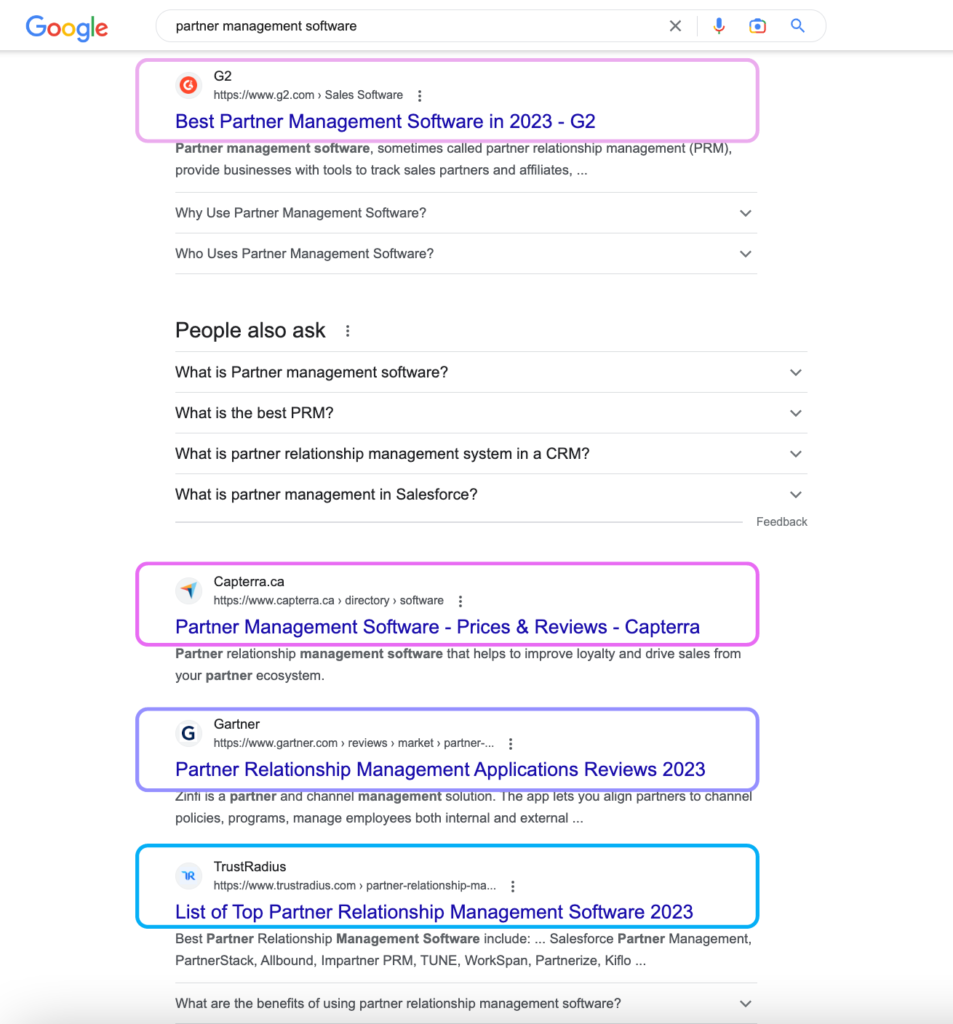
Other ways to prioritize software review sites
Another way to find out where to focus your reviews is to research where your competitors, particularly those more established than you, are listed and generate most of their reviews.
If you find a review site that ranks highly in organic search but doesn’t have many reviews yet, you may have found a low-hanging fruit opportunity to increase your position with relatively few reviews.
One way to show up in more buyer searches on review sites is to go through the “all categories” section, review site by review site, to see which categories are relevant to your brand. For category fit, ask yourself, are the companies listed in it the ones your Sales team competes against in deals?
Not happy with the category that you are or are not in? You can try to petition the review site to create a new one. Upshot by Influitive shared how Quickbase effectively petitioned G2 to create a new category. As Davin Wilfrid, former Customer Marketing Manager at QuickBase, said, “We then petitioned G2 Crowd to create a new category called “Rapid Application Development” that would include QuickBase and its competitors and place us on a level playing field. We supported our request with analyst reports, customer stories, and information on our competitors. To our delight, it worked!”
If your SaaS product isn’t self-service, you can check if any review sites come up on sales calls. For PartnerStack, we find that G2 comes up on many calls. With Gong call tracking software, we can search for G2 mentions by customers (or prospects), see how many times it comes up (hundreds for us), and dig into the specific calls with mentions. You can see what one of these filtered searches and specific G2 mentions looks like in this screenshot of Gong:
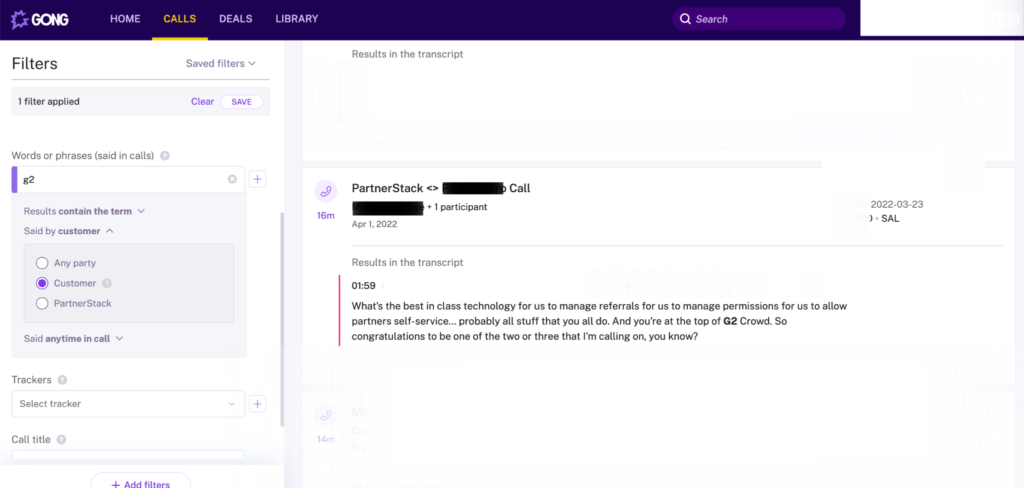
By combining the search result data for your key buying terms with what you hear from prospects on Sales calls, you’ll have a good sense of which review sites to prioritize.
Reviews for B2C
Where you find reviews is very different in B2B and B2C.
In B2C, more than 50% of B2C reviews are left on Google, followed by Facebook, Yelp, and TripAdvisor.
Based on 2021 data, while the four review sites in B2C have remained the same, buyers say they turn to Google most often, followed by Yelp and TripAdvisor, and then Facebook.
Beyond the big 4 sites for reviews in B2C, see this Birdeye post on 10 business review sites to know. They also have a comprehensive list of 200 sites with reviews.
To learn more about software review sites
See the related stories on:
- Why Do User Reviews Matter in B2B Software? [2022]
- How To Generate, Leverage, and Measure Reviews: A Practitioner’s Guide to B2B SaaS Reviews
If you’re looking for more information on review sites for consumer and local businesses (as part of a broader guide to reviews for business owners), see this post by Podium.
Author
-
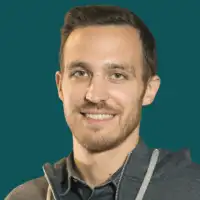
I'm the Founder and Editor-In-Chief of B2B SaaS Reviews and the Director of Demand Generation at PartnerStack, the leading platform for partner management and affiliate marketing in B2B SaaS. My experience spans several notable B2B SaaS companies, including Influitive (Advocate Marketing), LevelJump (Sales Enablement, acquired by Salesforce), and Eloqua (Marketing Automation, acquired by Oracle). I hold a Bachelor of Commerce in Marketing Management from Toronto Metropolitan University and a Master of International Business from Queen's University, with academic exchanges at Copenhagen Business School and Bocconi University.



